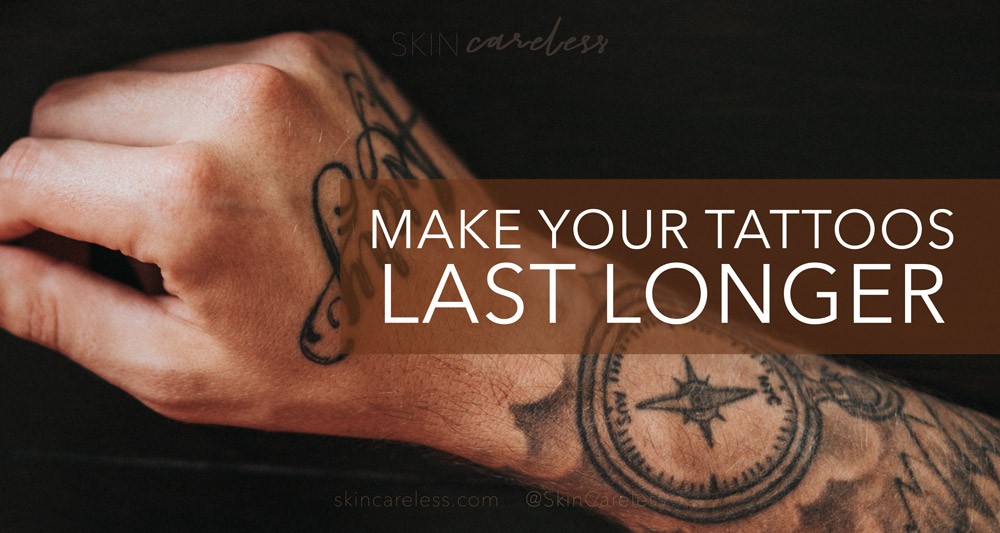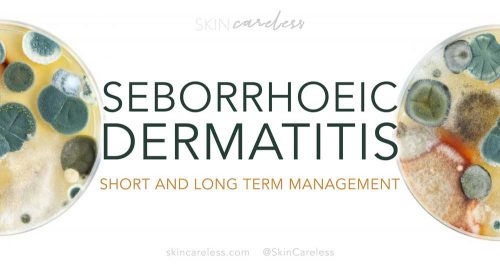It’s the first thing people think about when they hear the word “tattoo” – how permanent it is. Perhaps you’re mulling it over in your mind whether to get a tattoo or not, but aren’t sure how it’ll look in 20, 30, or 40 years.
Or, you’ve just gotten a tattoo and it looks so perfect and exactly how you wanted it. It’s only natural to want to find out how to make sure your new tattoo lasts as long as possible. After all, nobody wants to pay hundreds of dollars for a temporary tattoo.
But what if it doesn’t last? Can that even happen?
When they’re not well treated, a tattoo can go from looking fantastic to looking like a hot mess in a matter of 5 years. Think faded, blurred and blown-out. Black inks turn blue and colours fade to nothing. But looked after with proper skin care, a good, well-thought-out tattoo should last a lifetime. That’s not to say it’ll stay looking exactly how it did on the day it was first done, but with the right care you can expect your tattoos to still look fantastic, clear and bright decades and decades from now (within reason).
So what do I mean by looking after your tattoo? Your body needs skin care as much as your face does – especially when you have tattoos to take care of. That means proper exfoliation, moisturisation and – most importantly – sun protection. These things will keep it looking good short-term, making tattoos appear brighter and clearer, as well as long-term, to prevent the fading of the tattoo ink.
From how to choose a tattoo and placement that will look its best for as long as possible, to how to take care of it the day you when you walk out of the shop to a decade down the line, let’s jump into these basic tattoo care tips.
The 8 key things that make a tattoo last longer
Both pre- and post-tattoo care are equally important. Tattoos are a commitment!
Pre-tattoo checklist
Much of your tattoo’s fate rests on the decisions you make before you’re even in the chair.
Research your chosen tattoo artist
Quality pays. And when it’s permanent body art, don’t cheap out. High quality ink wielded by a skilled hand will not only look better, but will stay looking good for longer, and this often means paying more in price. It’s all to do with the artist’s experience depositing the tattoo ink into the correct layer of the skin. The consequences of poor tattooing technique include blowout (a blurry ink shadow below the skin), shaky lines, or at worst a terrible design or execution of ideas. If they don’t go deep enough, the tattoo just won’t last.
Also, check out the artist’s best work – see if you can find a web gallery or their Instagram page and consider that what you’re seeing will be the best quality they produce. Nobody puts their bad art online, only what they’re most proud of. So ensure you’re extremely happy with what they’re putting out there.
Consider your choice of tattoo
Depending on your motivations for getting a tattoo, you may want to adjust your expectations or ideas of your design to maximise longevity. If you’re serious about having a long-lasting tattoo, experts recommend staying away from watercolour and fine line tattoo styles, as the lack of thick dark borders means fading will be more prominent and the tattoo may become illegible over time. There’s a reason traditional tattoos (think sailor-style flat colours and black borders) have stood the test of time. Black and white is also thought to last better and age more gracefully than colour. So if you’re concerned about how well it’ll hold up, spend some time designing your tattoo with these things in mind.
Double check the placement
When you’re choosing your tattoo’s new home, try to avoid areas prone to stretching and changes in size, like your stomach. The constant warping of your artwork will only encourage breakdown of the ink. Also, steer clear of roughly used or high-friction areas such as the feet, ankles, hands, and inner lip. Friction will not only make the healing process more uncomfortable, but lead to more blurring and fading over time. Contrary to popular belief, tattoos in these areas aren’t semi-permanent, and likely will never fade entirely, but they will wear out faster and you should consider this when making a realistic expectation of how long your artwork will last. Some good places to get tattoos are your outer arms, back, and lower legs.
Post-tattoo care
Now that you’ve put in the though, paid (probably a lot of) money to have it put in there, and hopefully its as perfect as you’ve imagined, it’s up to you to keep that shiny new tattoo looking its best!
Keep your new tattoo clean, moist and covered
Listen to the artist’s directions as to how long you should leave your fresh tattoo before taking off the protective wrap. When it comes time to start washing your tattoo, treat it like you would an open wound. While you can’t see it, there are thousands of tiny wounds on the skin causes by the tattoo machine and they can easily become infected. Wash with a fragrance-free, antibacterial soap and only touch it after washing your hands thoroughly first.
Your tattoo artist should provide you with an aftercare cream or ointment to apply after washing it for the first time. Keeping a new tattoo moist prevents major scabbing and promotes faster healing. The more smoothly the tattoo heals, the less likely you are to experience scarring or have the body react to any of that fresh pigment.
Don’t pick scabs
When scabbing inevitably occurs a few days into the healing process of a new tattoo, leave it alone! Picking scabs can remove the tattoo’s colour and leave dull or even blank patches from the artwork. Don’t use any strong scrubs, exfoliating actives (like AHA and BHAs), or wear tight clothes that will irritate or pull at the healing skin. Let the healing scabs clear up naturally and in their own time (which you should do all the time anyway, regardless of the reason for it!).
Protect your ink from the sun
UV rays bleach the ink in your tattoos just like they bleach colours from fabric. Imagine wearing the same shirt in the sun every day for decades. You would expect some pretty serious fading! Same goes for tattoos. Wearing sunscreen and covering your artwork with clothes whenever possible will prolong the vibrancy of your tattoo. You should be sun safe generally for so many reasons, but be especially careful with tattooed areas. Start wearing sunscreen as soon as you get the go-ahead from your tattoo artist, and never stop. This rule includes those with dark skin, because though you’re not as prone to sunburn and skin cancers, the melanin in your skin isn’t strong enough to protect tattoo inks that sit millimetres below the surface – they’ll still fade on you!
Hydrate to make your tattoo seem fresher
Moisture keeps your tattoos looking vibrant. Especially on darker skin, dryness shows up as ashy skin that dulls the colour of a tattoo. Like how varnish on a painting deepens the colours, hydrated skin allows the true look of the tattoo to shine through, which will make it look fresher and newer than it is. You can go for whatever kind of moisturiser you’d like to use, but I think a body oil is especially flattering and brings out the colours beautifully.
Get touch ups when the time comes
It sounds like cheating, but few tattoos will last perfectly forever. It’s better to get small touch ups while your tattoo still looks good than to put it off until the tattoo is too far gone and needs to be completely reworked.
Experts recommend touch ups a few weeks to months after the initial session if any colour came out during the healing process or your skin responded poorly to the ink. This is usually offered free of charge. After that, keep an eye on your designs and when they start to lose their clarity, consider visiting a tattoo parlour and consult a professional to see whether a touch up is right for you.
Tattoo care isn’t hard – it’s just about consistently treating your skin with a little extra love. In the meantime, enjoy your new artwork and show it off!






[…] It’s one thing to just know that the sun damages and ages your skin cellularly, but it’s another to see the effects visually. A faded tattoo is a fantastic example of the cumulative power of UV exposure. […]